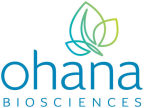Ohana Biosciences Presents Data Showing Its Novel Sperm Enhancement Treatment, SPERTILITY™, Increases Sperm Hyperactivation

- SPERTILITY™ is an ex vivo sperm enhancement treatment currently being investigated in an ongoing clinical trial (NCT04142112) for couples using Assisted Reproductive Technology (ART)
- Pre-clinical data in mice demonstrated percentage of hyperactivated sperm more than doubled, yielding a three-fold increase in births via IVF and a five-fold increase in births via IUI
- Previously published clinical data shows the correlation between increased sperm hyperactivation and increased pregnancy rates
CAMBRIDGE, Mass.--(BUSINESS WIRE)--Ohana Biosciences, a clinical-stage biotechnology company pioneering reproductive health through the industry’s first sperm biology platform, today announced findings from data on their product candidate, SPERTILITY™. Presented during the American Society of Andrology’s virtual poster session, the pre-clinical data show that this novel sperm enhancement treatment significantly increases the hyperactivation of sperm, potentially leading to increased likelihood of pregnancy for couples using Assisted Reproductive Technology (ART). The data and accompanying presentation can be viewed here.
“In natural conception, sperm are exposed to changes in environment as they travel through the female reproductive tract, taking them through a step-by-step process that ultimately prepares sperm for ‘hyperactivation,’ the state required for fertilization,” said Kathleen Seyb, Ph.D., Vice President of Research at Ohana Biosciences, who presented the data. “SPERTILITY™ is designed to mimic this process, increasing the number of sperm that ultimately achieve hyperactivation. Through improving sperm function and fertility, we believe we can increase the success rates for people using ART to conceive.”
In a non-clinical study semen samples were obtained from a total of 72 men. Of the 72, 48 were from couples seeking infertility treatment and 24 were healthy men. Investigators isolated sperm and processed half with the step-wise Ohana sperm enhancement treatment and the other half with the current standard of care, a commercially available sperm wash. In samples from the infertility treatment group, the percent of sperm that were categorized as hyperactive was significantly higher when processed with Ohana’s sperm enhancement treatment. The findings were similar for the samples obtained from healthy men. The study also found that Ohana’s treatment restored normal motility phenotype in sub-fertile human sperm, making it similar to sperm from healthy donors.
“Infertility impacts seven million couples in the U.S. and approximately 90% of these couples go untreated. On average, people undergo 2-3 cycles at a cost of approximately $16,000 per cycle in the U.S. Despite these dismal statistics, there’s been little innovation in the way sperm is treated during ART,” said Amber Salzman, Ph.D., Ohana President and CEO. “Nearly all innovation in the space has focused on women, while current practices for sperm preparation have remained relatively unchanged for more than 40 years. It’s time to do better. We believe by focusing on sperm, we can improve success rates in IVF and IUI, thus providing better outcomes for all people trying to conceive.”
Sperm Hyperactivation and Pregnancy
The association between sperm hyperactivation and successful IVF in humans has been documented in medical literature. Based on Computer-Aided Sperm Analysis (CASA) of samples in 150 couples undergoing IVF, the same analysis used in the Ohana study, Donnelly and colleagues1 found an approximately two-fold increase, from 5% to 9%, in the median percent of hyperactive sperm in couples who achieved pregnancy compared to those who did not. Applying the same definition of hyperactivation used by Donnelly, sperm processed using Ohana’s sperm enhancement treatment had 17.5% hyperactivation, a percent hyperactivation that has a significant association with pregnancy in the Donnelly study.
In preclinical studies, the Ohana treatment significantly increased fertilization and embryo development from total oocytes retrieved. In addition, there was a 1.5-fold increase in the number of embryos that developed from two-cell embryos and a higher live birth rate. In a mouse intrauterine insemination (IUI) model, the Ohana treatment was associated with a three-fold increase in pregnancy rates and a five-fold increase in live birth. Taken together, these data suggest that activating sperm using Ohana’s sperm enhancement treatment may not only improve sperm function and fertilization, but also embryo development, increasing pregnancy and live birth in both IVF and IUI in mice.
Ongoing Clinical Study
Ohana is currently evaluating SPERTILITY™ in a blinded, randomized, controlled study using a split insemination design in approximately 80 couples undergoing IVF at seven fertility centers in the United States. Investigators are monitoring for fertilization rate, embryo development and the number of high-quality euploid embryos available for transfer using sperm treated with SPERTILITY™ versus a standard commercially available sperm wash. The study will follow up on pregnancy outcomes that result from the IVF procedure and the results of safety assessments. Data from the trial is anticipated by year-end.
About Ohana Biosciences
At Ohana Biosciences, we are pioneering a reproductive health revolution through our industry-first platform of sperm-based technologies. We began with a vision to reimagine global reproductive health and help all people create the healthy family they dream of – when they are ready. Today, we believe our unprecedented understanding of sperm biology coupled with our pioneering research will turn our vision into a reality. Through our platform, we are focused on fundamental components of reproductive health: fertility, pregnancy complications, inherited disease, developmental disorders, and non-hormonal contraception. By advancing research in fertility treatments, new technologies to reduce pregnancy complications, disease transmission, and developmental disorders, and enabling non-hormonal contraception, Ohana is dedicated to becoming a leader in reproductive health and offering life-changing options for people. Ohana was founded in 2016 by Flagship Pioneering and is based in Cambridge, Mass. For more information, please visit www.OhanaBio.com.
1 Donnelly et al. In vitro fertilization and pregnancy rates: the influence of sperm motility and morphology on IVF outcome. Fertil Steril. 1998; Aug; 70(2):305-314.
View source version on businesswire.com: https://www.businesswire.com/news/home/20200603005133/en/
Source: Ohana Biosciences

